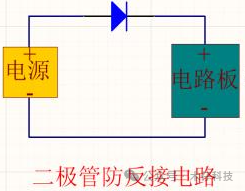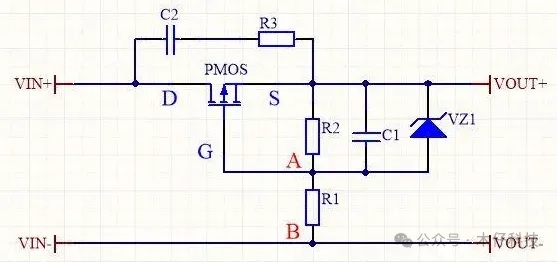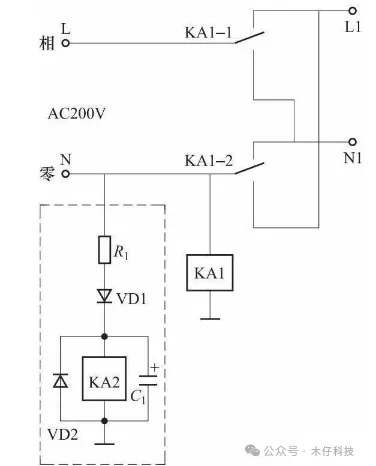When designing a circuit, hardware engineers often need to consider the possible reverse connection of the power input, that is, the positive and negative terminals of the power supply are reversed. In order to avoid damage to the circuit caused by this situation, an anti-reverse circuit is usually added to the power input. The following are several commonly used anti-reverse circuit design schemes:
1. Diode anti-reverse connection
•How it Works:
• Use the unidirectional conductivity of the diode to block the reverse current.
• Circuit composition:
• A diode is connected in series between the positive terminal of the power supply and the ground.

•Advantages:
• Simple structure.
• Low cost.

•Cons:
• The on-voltage drop of the diode causes a voltage loss.
• Low efficiency, not suitable for high current applications

2. MOSFET anti-reverse connection
•How it Works:
• Use the MOSFET's gate control features to block reverse current.
• Circuit composition:
• A P-channel MOSFET is connected in series between the positive terminal of the power supply and the ground, the gate is connected to the positive terminal of the power supply, the source is connected to the power input, and the drain is grounded.

•Advantages:
• Low on-resistance, high efficiency.
• Suitable for high current applications.

•Cons:
• Additional control circuits are required.
• Relatively high cost.

3. PNP transistor anti-reverse connection
•How it Works:
• Use the cut-off characteristics of the PNP transistor to block the reverse current.
• Circuit composition:
• A PNP transistor is connected in series between the positive terminal of the power supply and the ground, the base is connected to the positive terminal of the power supply, the emitter is connected to the power input, and the collector is grounded.
• Advantages:
• Simple structure.
• Lower cost.
• Disadvantages:
• Similar to the diode scheme, there is a voltage loss.
• Low efficiency.
4. Relay anti-reverse connection


•How it Works:
• Use the switching characteristics of relays to block reverse current.
• Circuit composition:
• A relay contact is connected in series between the positive terminal of the power supply and the ground, and the relay coil is powered by the positive terminal of the power supply.
• Advantages:
• Suitable for high current and high voltage applications.
• Can provide reliable isolation.
• Disadvantages:
• Relatively high cost.
• Extra space required.
5.Two-way TVS tube anti-reverse connection

•How it Works:
• Use the on-on characteristics of the bidirectional TVS tube to block the reverse current when the threshold voltage is exceeded.
• Circuit composition:
• Parallel a bidirectional TVS tube between the positive terminal of the power supply and the ground.
• Advantages:
• Simple structure.
• Lower cost.
• Disadvantages:
• Suitable for low current applications only.
•TVS tubes have a certain response time delay.
Selection suggestion
•Cost sensitive applications:
• For cost-sensitive applications, diode anti-reverse or PNP transistor anti-reverse solutions are available. • High efficiency requirements:
• For applications that require high efficiency, you can choose the MOSFET anti-reverse connection solution.
• High current application:
• For high current applications, you can choose between MOSFET anti-reverse or relay anti-reverse solutions.
• Space limited applications:
• For space-constrained applications, diode anti-reverse or bidirectional TVS tube anti-reverse solutions can be selected.
When selecting the anti-reverse circuit, it should be comprehensively considered according to the specific application requirements, cost budget, working environment and other factors. Manufacturers often provide detailed specifications and technical support to help select the most suitable application
免责声明: 本文章转自其它平台,并不代表本站观点及立场。若有侵权或异议,请联系我们删除。谢谢! Disclaimer: This article is reproduced from other platforms and does not represent the views or positions of this website. If there is any infringement or objection, please contact us to delete it. thank you! |


